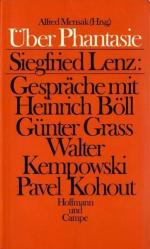|
This section contains 378 words (approx. 2 pages at 300 words per page) |
World of Physics on Heinrich Lenz
Heinrich Friedrich Emil Lenz, also called Emil Khristianovich, was a Russian physicist best known for his contributions to electromagnetic research. During his career as professor and dean at the University of St. Petersburg, Lenz published the two-volume Handbook of Physics along with 50 monographs and papers, most of which appeared in German periodicals. Early in his career, Lenz developed Lenz's law on the direction of induced current in an electromagnetic demonstration.
Very little is known of Lenz, partly because he worked far from the intellectual centers of Europe, and partly because Lenz, in his preoccupation with his scientific work, kept few personal records. He was born in Dorpat, Estonia, and studied theology before switching to science. He received a doctor of philosophy degree, which was common for scientists at the time, and traveled around the world at the age of 20, writing as a naturalist. Gradually his interests turned to physics, and Lenz was elected to the Imperial Academy of Sciences at St. Petersburg, where he had presented scientific papers.
Lenz's seventh paper, "On the Laws which Govern the Action of a Magnet upon a Spiral," sealed his reputation as a physicist. In this paper, he spelled out Lenz's law, in which he observed that induced currents never support and always oppose the changes by which they are induced. Lenz's law is still included in standard physics texts. However, the full impact of Lenz's original work may have been obscured by the opening of the paper, in which he verified Michael Faraday's findings. Lenz tried to establish quantitative or measurable relationships between different magnetic effects, and this set him apart from the electromagnetic research of Joseph Henry and Michael Faraday, whose work was more qualitative, or descriptive.
After his first electromagnetic studies, Lenz understood that he must map out the characteristics of the "electromotive spiral," as he called it. To carry out this research, Lenz designed a galvanometer, a soft iron cylinder that was wound with 72 turns of very thin wire. Lenz had read Georg Simon Ohm's laws of electrical circuitry and incorporated these newly discovered findings into his own quantitative research. Lenz's notes suggest that he may have arrived at these laws on his own before reading Ohm. Lenz also discovered that electrical resistance depends on temperature.
|
This section contains 378 words (approx. 2 pages at 300 words per page) |


